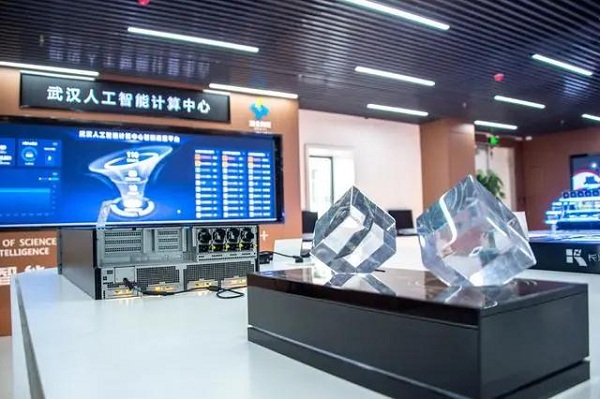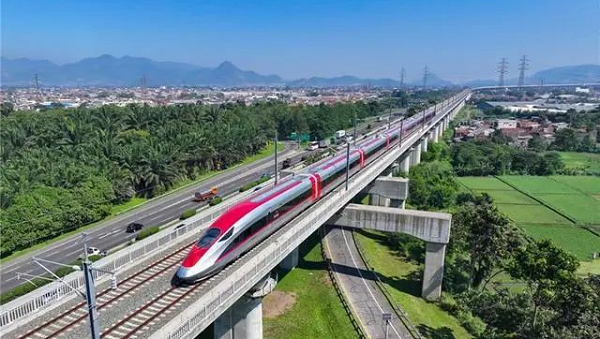Phase-two of Wuhan AI center begins operation

The Ascend 910 and Ascend 310 processor on display at the Wuhan Artificial Intelligence (AI) Computing Center. [Photo/WeChat account of Optics Valley of China]
The Wuhan Artificial Intelligence (AI) Computing Center is a key support project for the construction of the Optics Valley Chinese Sci-tech City in East Lake High-tech Development Zone, also known as Optics Valley of China (OVC). The center's second phase was completed on Feb 7, the first weekday of 2022 in China, according to local news reports.
The completion of the second phase will bring the computing power of the center from the original 100 petahash per second to 200 petahash per second. To date, the center's computing power has exceeded that of 100,000 computers.
As a major frontier interdisciplinary and industrial transfer platform of the science city, the center was initiated by the Wuhan government, undertaken by the Optics Valley of China, and is a basic AI infrastructure that offers public services.
In September 2020, Wuhan was approved as China's new-generation AI innovative development pilot zone. One year later, the center's first phase was completed and began operating, taking the lead among other ongoing projects in the pilot zone.
A staff member at the center said that they are poised to expand the center's computing power at any time, expressing hope that it will become a new type of public resource available to enterprises, colleges and individuals, just like water, electricity and gas.
Douyu TV – a unicorn company based in OVC – reported a large increase in research efficiency by using the computing power offered by the center, which has to a great extent shortened the models' training spans and improved image quality.
Practical results have been achieved in R&D, application incubation, and talent and enterprise cultivation by the center since it began operating. By rendering its computing power services to medium- and small-sized enterprises for the purposes of innovation and intelligent transformation, the center has lowered research thresholds and helped cut research costs.
The center has served many key universities, such as Wuhan University and Tsinghua University, as well as more than 100 major firms, with over 200 corporations willing to cooperate. Its services have been widely applied in smart manufacturing, smart city, livestreaming, and many other fields.




